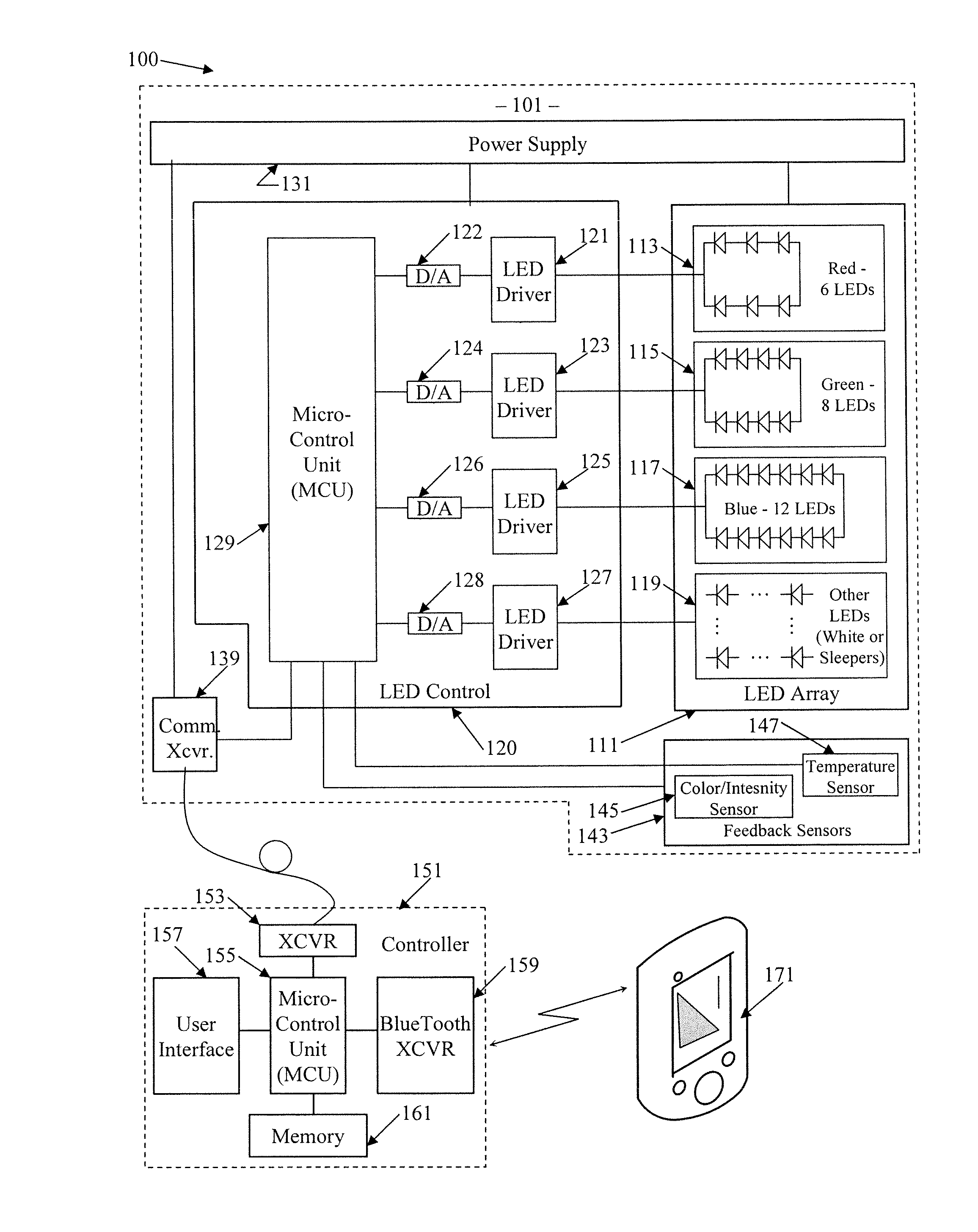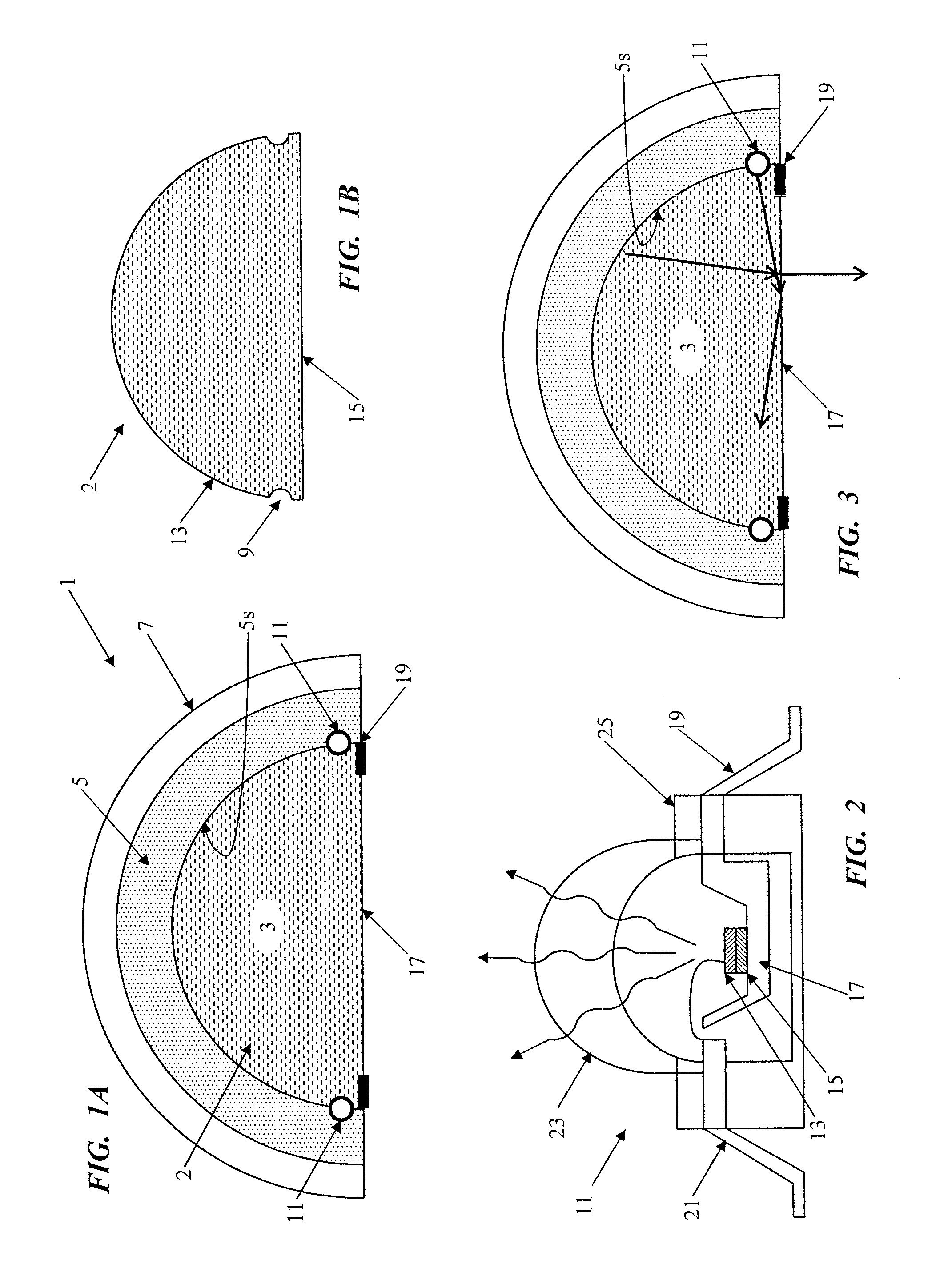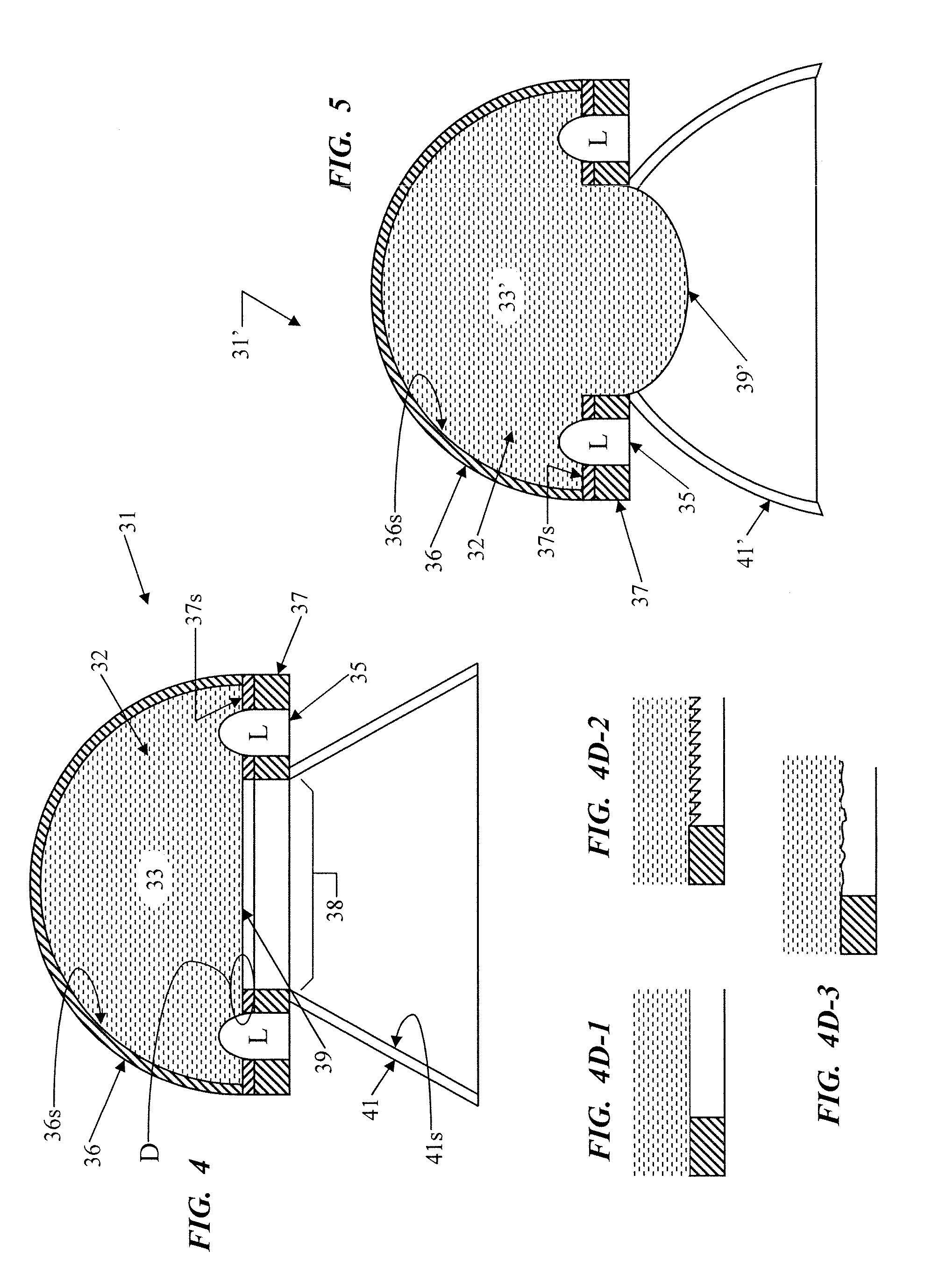Solid state lighting using light transmissive solid in or forming optical integrating volume
a solid state, light transmissive technology, applied in the direction of lighting and heating apparatus, semiconductor devices of light sources, light source combinations, etc., can solve the problems of reducing the efficiency of lighting apparatus over time, reducing the efficiency of reflection, etc., to improve the efficiency of light extraction from the emitter package, reduce reflection efficiency, and reduce the effect of efficiency of reflection
- Summary
- Abstract
- Description
- Claims
- Application Information
AI Technical Summary
Benefits of technology
Problems solved by technology
Method used
Image
Examples
Embodiment Construction
In the following detailed description, numerous specific details are set forth by way of examples in order to provide a thorough understanding of the relevant teachings. However, it should be apparent to those skilled in the art that the present teachings may be practiced without such details. In other instances, well known methods, procedures, components, and circuitry have been described at a relatively high-level, without detail, in order to avoid unnecessarily obscuring aspects of the present teachings. Generally, the illustrations in the figures are not drawn to scale, but instead are sized to conveniently show various points under discussion herein.
The various examples discussed below relate to lighting fixtures or apparatuses using solid state light sources and / or to lighting systems incorporating such devices, in which at least a substantial portion of an optical integrating volume is filled with a light transmissive solid. Techniques for manufacturing certain elements of th...
PUM
 Login to View More
Login to View More Abstract
Description
Claims
Application Information
 Login to View More
Login to View More - R&D
- Intellectual Property
- Life Sciences
- Materials
- Tech Scout
- Unparalleled Data Quality
- Higher Quality Content
- 60% Fewer Hallucinations
Browse by: Latest US Patents, China's latest patents, Technical Efficacy Thesaurus, Application Domain, Technology Topic, Popular Technical Reports.
© 2025 PatSnap. All rights reserved.Legal|Privacy policy|Modern Slavery Act Transparency Statement|Sitemap|About US| Contact US: help@patsnap.com



